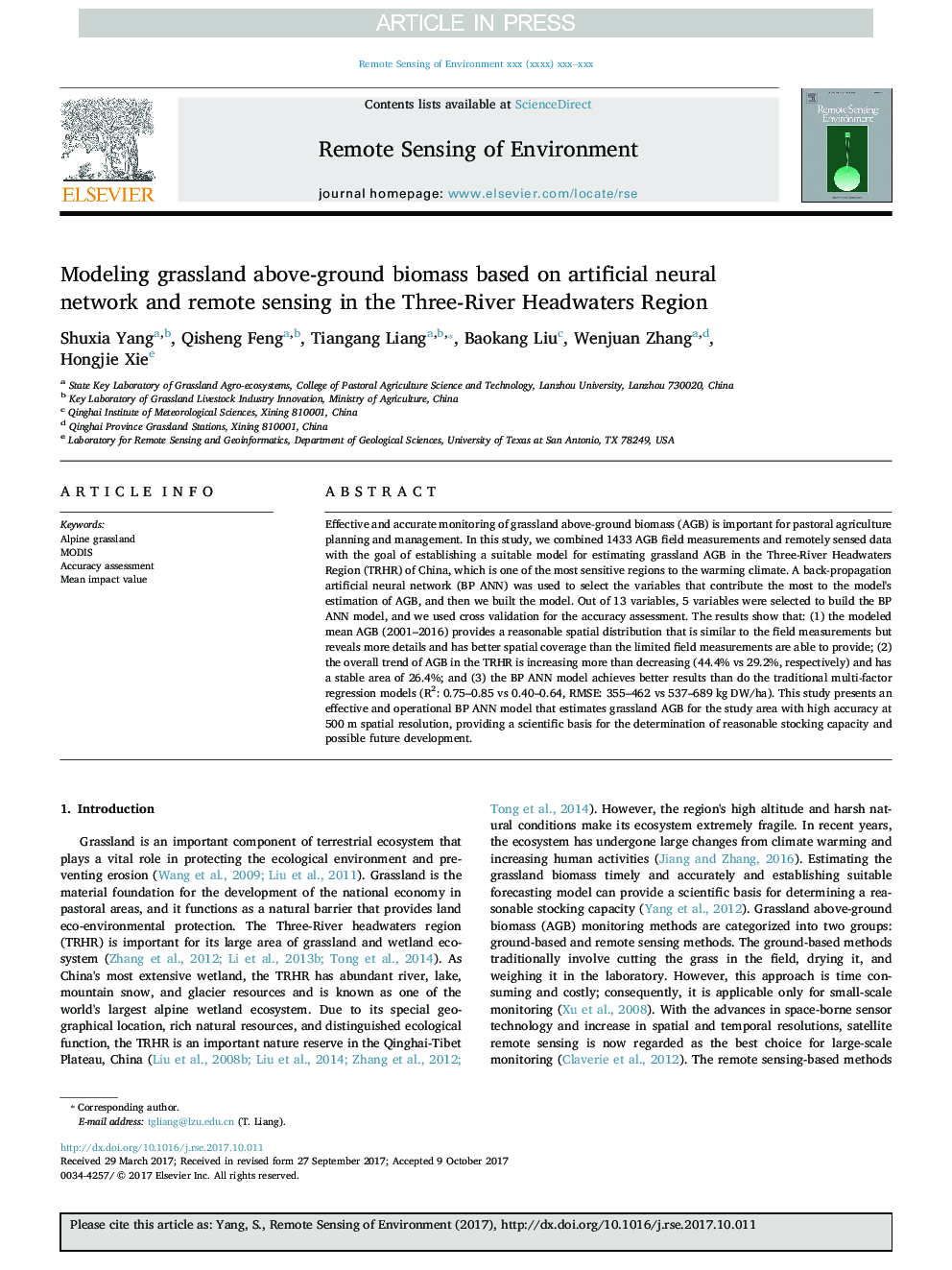| Article ID | Journal | Published Year | Pages | File Type |
|---|---|---|---|---|
| 8866865 | Remote Sensing of Environment | 2018 | 8 Pages |
Abstract
Effective and accurate monitoring of grassland above-ground biomass (AGB) is important for pastoral agriculture planning and management. In this study, we combined 1433 AGB field measurements and remotely sensed data with the goal of establishing a suitable model for estimating grassland AGB in the Three-River Headwaters Region (TRHR) of China, which is one of the most sensitive regions to the warming climate. A back-propagation artificial neural network (BP ANN) was used to select the variables that contribute the most to the model's estimation of AGB, and then we built the model. Out of 13 variables, 5 variables were selected to build the BP ANN model, and we used cross validation for the accuracy assessment. The results show that: (1) the modeled mean AGB (2001-2016) provides a reasonable spatial distribution that is similar to the field measurements but reveals more details and has better spatial coverage than the limited field measurements are able to provide; (2) the overall trend of AGB in the TRHR is increasing more than decreasing (44.4% vs 29.2%, respectively) and has a stable area of 26.4%; and (3) the BP ANN model achieves better results than do the traditional multi-factor regression models (R2: 0.75-0.85 vs 0.40-0.64, RMSE: 355-462 vs 537-689 kg DW/ha). This study presents an effective and operational BP ANN model that estimates grassland AGB for the study area with high accuracy at 500 m spatial resolution, providing a scientific basis for the determination of reasonable stocking capacity and possible future development.
Related Topics
Physical Sciences and Engineering
Earth and Planetary Sciences
Computers in Earth Sciences
Authors
Shuxia Yang, Qisheng Feng, Tiangang Liang, Baokang Liu, Wenjuan Zhang, Hongjie Xie,
